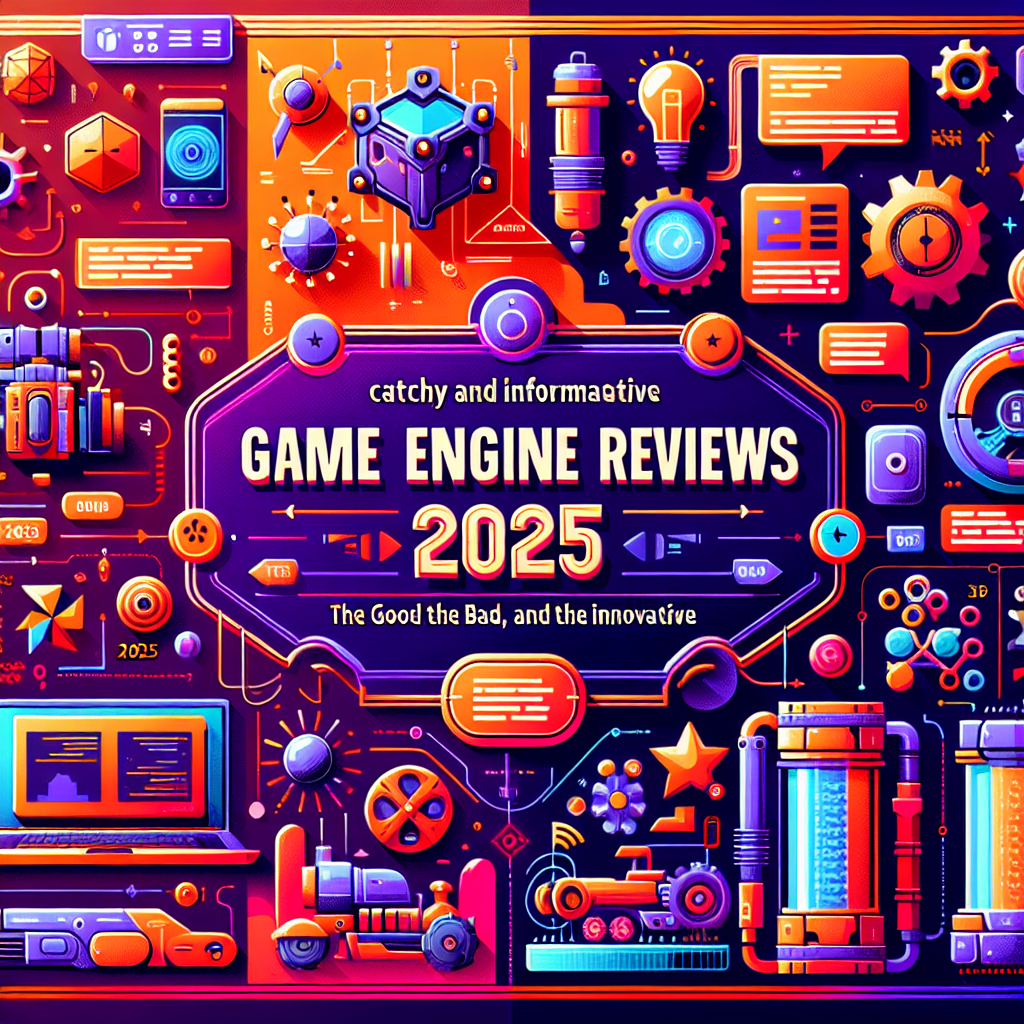Game Engine Reviews 2025: The Good, The Bad, and The Innovative
As we dive deeper into 2025, the landscape of game development continues to evolve at an astonishing pace. New advancements in technology, changing player expectations, and innovative design philosophies are reshaping the gaming industry. Game engines—the backbone of video game development—are at the forefront of this transformation. In this article, we’ll explore the most notable game engines of the year, highlighting their strengths, weaknesses, and groundbreaking features that are setting them apart.
The Good: Engines That Excel
Unreal Engine 5
Unreal Engine remains one of the most powerful and widely used game engines in the industry. The 2025 version builds on the groundbreaking features introduced in Unreal Engine 5, such as Nanite virtualized geometry and Lumen global illumination. These innovations offer developers the ability to create visuals that blur the line between reality and virtuality, enhancing immersion like never before.
Beyond graphics, Unreal Engine 5’s robust ecosystem of tools simplifies the development process, making it an excellent choice for both indie developers and AAA studios. The increase in community resources, tutorials, and ready-made assets has made it easier than ever for newcomers to jump in and start creating.
Unity 2025
Unity has solidified its position as a versatile game engine, particularly favored by indie developers and mobile game creators. The enhancements made in 2025 focus on improved rendering capabilities, allowing for high-quality graphics without compromising performance. The new DOTS (Data-Oriented Technology Stack) updates notably enhance performance in larger-scale games, providing a reliable framework for creating intricate game worlds.
Unity’s extensive marketplace remains a strong selling point, offering countless assets and tools that can aid developers at all skill levels. Furthermore, the engine’s strong focus on cross-platform capabilities ensures that games can reach a broad audience across multiple devices.
The Bad: Engines Facing Challenges
CryEngine
While CryEngine was once synonymous with cutting-edge graphics, recent updates have struggled to keep pace with the fast-moving competition. Many developers cite a steep learning curve and a lack of user-friendly documentation as significant drawbacks. Furthermore, the engine has not seen the level of community support that Unreal and Unity enjoy, which can hinder collaboration and learning opportunities for new users.
Despite its powerful capabilities, including stunning real-time graphics and environmental effects, CryEngine’s slow adoption by developers has led to concerns about its future viability in a rapidly evolving market.
GameMaker Studio 3
GameMaker remains a favorite for 2D developers due to its intuitive drag-and-drop interface and scripting capabilities. However, its latest iteration, GameMaker Studio 3, has faced criticism for being overly simplistic for larger projects. While the engine excels in creating smaller, charming titles, it struggles with performance issues in more complex games.
The limitation of features compared to competitors, especially in terms of 3D capabilities, has also led to frustration among developers who are looking to innovate beyond the traditional 2D landscape.
The Innovative: Engines Leading the Charge
Godot Engine 4.0
Godot’s ascent has become a remarkable story in the game engine world. With the major 4.0 update launched this year, Godot is positioning itself as a formidable competitor to Unreal and Unity. Its fully open-source nature has drawn a passionate community of developers who are continually pushing improvements. Godot 4.0 introduced a new rendering engine that supports Vulkan, enabling better graphics and performance.
Moreover, Godot’s emphasis on ease of use, especially for 2D game development, puts it ahead as a go-to solution for rapid prototyping and indie projects. Its unique scene system allows for a modular approach, which many developers find appealing for scaling their projects.
Amazon Lumberyard
Amazon Lumberyard has taken significant strides toward establishing itself as a major player in the game engine market. One of the most innovative aspects of Lumberyard 2025 is its seamless integration with AWS services, providing developers with powerful cloud capabilities. This feature enables easier multiplayer game development, as well as enhanced scalability for online games.
Additionally, Lumberyard is uniquely suited for creating immersive experiences by utilizing Amazon’s animation and AI services, further broadening its appeal to developers looking to push boundaries in gameplay mechanics and storytelling.
Conclusion
Game engines in 2025 reflect the dynamic nature of the gaming industry, with each offering its own unique strengths and challenges. While some longstanding giants like Unreal and Unity continue to lead the charge with powerful features and robust support systems, emerging contenders like Godot are carving out their own spaces with innovative approaches.
As technology advances and gamer expectations evolve, choosing the right engine will increasingly depend on project goals, team familiarity, and the specific gameplay experiences developers want to create. The landscape is ever-changing, and with it comes exciting opportunities for developers to push the boundaries of what’s possible in interactive entertainment.




